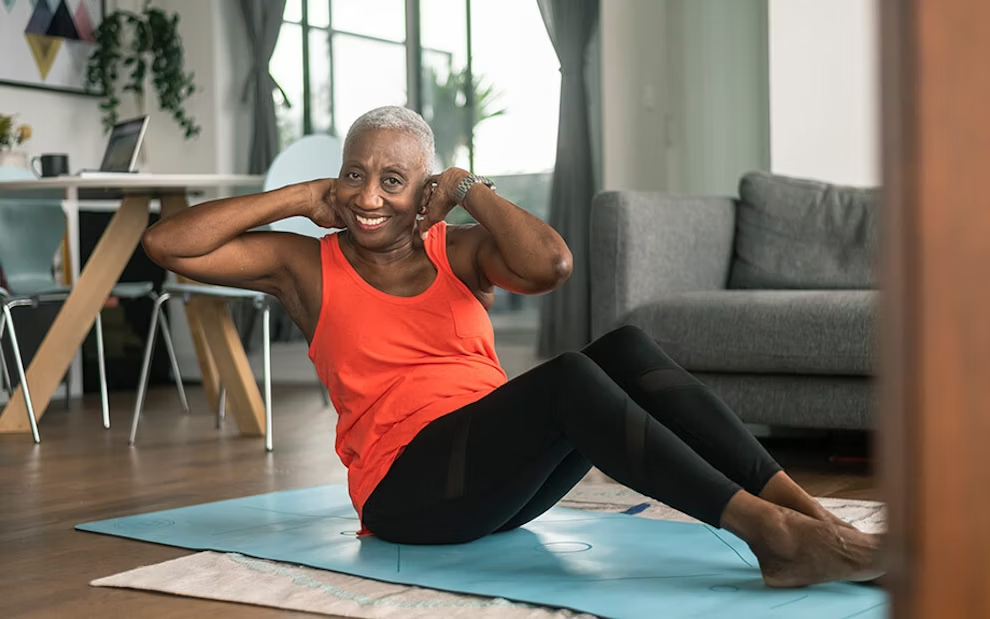Introduction to Physical Activity
In today’s fast-paced world, it’s easy to overlook physical activity’s simple yet profound impact on our lives. We often find ourselves glued to screens or stuck in a sedentary routine, unaware of how much this lifestyle can affect our health and well-being. But think briefly: what would your life look like if you incorporated regular movement into your day? The benefits of physical activity are immense, from boosting mood to increasing activity levels. Explore why staying active is essential for leading a healthy lifestyle and discover practical ways to weave movement seamlessly into our daily routines.
The Benefits of Physical Activity for Overall Health
Engaging in physical activity offers a multitude of benefits that extend beyond just weight management. Regular movement strengthens the heart, improving cardiovascular health and reducing the risk of chronic diseases.
Physical activity also boosts mental well-being by releasing endorphins and alleviating stress and anxiety. This natural mood enhancement contributes to improved sleep patterns and overall emotional resilience.
Moreover, staying active enhances muscle strength and flexibility. It also helps maintain bone density as one age, reducing the likelihood of osteoporosis and fractures.
Incorporating various forms of exercise can also improve cognitive function. Research shows that individuals who engage in regular physical activity may experience enhanced memory and sharper focus.
Being physically active fosters social connections when done with friends or groups. These interactions enrich your life while keeping you motivated on your fitness journey.
The Effects of a Sedentary Lifestyle

Sedentary lifestyles have become alarmingly common in today’s digital age. Many spend hours sitting at desks, glued to screens, or lounging on the couch. This lack of movement can lead to serious health issues.
One significant effect is weight gain. When we don’t burn enough calories through activity, our bodies store excess energy as fat.
Muscle strength and flexibility also suffer when we remain inactive for prolonged periods. Weak muscles can contribute to poor posture and increase the risk of injury during everyday activities.
Additionally, a sedentary lifestyle has been linked to mental health concerns like anxiety and depression. Physical activity releases endorphins that boost mood and reduce stress levels, making inactivity a double-edged sword for emotional well-being.
Moreover, prolonged sitting impacts cardiovascular health by increasing blood pressure and cholesterol levels. Without proper physical engagement in our routine lives, this sets the stage for heart disease over time.
Types of Physical Activity and Their Benefits
Physical activity comes in various forms, each offering unique benefits. Aerobic exercises, like running and cycling, boost cardiovascular health. They enhance lung capacity and endurance while effectively burning calories.
Strength training is another vital component. It builds muscle mass and improves metabolism. Lifting weights or using resistance bands helps maintain bone density as you age.
Take advantage of flexibility activities such as yoga or stretching. These practices increase the range of motion and reduce injury risk. They also promote relaxation and mental clarity.
Team sports can also foster social connections. Engaging with friends in a game enhances fitness and strengthens bonds.
Incorporating everyday movements counts as physical activity, too! Walking during lunch breaks or taking the stairs contributes to your overall well-being without needing formal exercise sessions. Each type plays a vital role in creating a balanced lifestyle that supports the body and mind.
How Much Physical Activity is Recommended
The World Health Organization recommends that adults engage in at least 150 minutes of moderate-intensity aerobic activity each week. This can be broken down into manageable sessions, such as 30 minutes a day, five days a week.
For those who prefer more vigorous activities, aim for around 75 minutes weekly. High-intensity workouts can provide similar benefits in less time.
Strength training is vital in addition to aerobic exercises. Incorporate muscle-strengthening activities on two or more days per week, targeting major muscle groups.
Children and adolescents should get at least one hour of physical activity daily. It’s essential for their growth and development.
These guidelines are adaptable based on individual fitness levels and health goals. Listen to your body and adjust the intensity to ensure sustainability over time.
Incorporating Physical Activity into Your Daily Routine

Finding ways to weave physical activity into your daily routine can be simple and effective. Start small by taking the stairs instead of the elevator. This slight change can boost your heart rate and energize your day.
Consider walking or cycling for short trips. It’s a great way to get fresh air while staying active and helps reduce stress.
If you work at a desk, set reminders to stand up and stretch every hour. These brief breaks improve circulation and enhance focus.
Engaging in family activities like playing tag with kids or going for evening walks can make exercise enjoyable rather than a chore.
Mix things up! Explore new classes or outdoor sports that interest you. Keeping it fun ensures you’ll stick with it long-term without feeling overwhelmed.
Motivation and Overcoming Barriers to Exercise
Finding motivation to engage in physical activity can be challenging. Life is busy, and letting exercise slip down the priority list is easy. Start by setting small, achievable goals that are specific and measurable. Celebrate each success, no matter how minor.
Sometimes, barriers like lack of time or resources can feel overwhelming. Instead of seeing these as roadblocks, view them as challenges to overcome. Can you squeeze a quick workout into your lunch break? Or involve friends for accountability?
Creating a routine makes physical activity more manageable. Consider incorporating movement into daily tasks—take the stairs instead of the elevator or walk during phone calls.
Remember that physical activity doesn’t have to mean hitting the gym. Dancing at home or taking a brisk walk counts, too. The key is finding what you enjoy so it doesn’t feel like a chore but an integral part of your daily life.
Conclusion
Embracing physical activity can transform your life in countless ways. Every step, every stretch, and every heartbeat contributes to a healthier you.
The journey doesn’t have to be overwhelming. Start small and gradually build up your routine. Each effort counts, whether a brisk walk or a dance session at home.
Listen to your body and find activities you genuinely enjoy. This makes the process enjoyable rather than a chore.
Remember that consistency is critical. With time, you’ll notice the benefits unfolding in both body and mind.
Physical activity isn’t just about fitness; it’s about enhancing the quality of life. Discover what moves you forward on this rewarding path toward well-being.
FAQs
What is considered physical activity?
Physical activity includes any movement that engages your muscles and requires energy. This can range from walking, running, dancing, and swimming to household chores or gardening.
How much physical activity do I need each week?
Experts recommend at least 150 minutes of moderate-intensity aerobic exercise weekly. This can be broken down into shorter sessions spread throughout the week for convenience.
Can physical activity help with weight management?
Yes, regular physical activity helps burn calories and build muscle mass. When combined with proper nutrition, it plays a crucial role in maintaining a healthy weight or aiding in weight loss.
Is it too late to start being physically active?
It’s never too late! People of all ages benefit from increased physical activity. Even small amounts can lead to significant health improvements.
What if I’m busy and don’t have time for exercise?
Incorporating short bouts of movement throughout your day can be effective. Try taking the stairs instead of the elevator or going for brisk walks during work breaks.
Does strength training count as physical activity?
Absolutely! Strength training is an essential aspect of overall fitness that enhances muscle strength, bone density, and functional abilities.
How do I stay motivated to keep exercising regularly?
Setting achievable goals, tracking progress, finding a workout buddy, or choosing enjoyable activities can significantly boost motivation.
Physical activity enriches our lives and lays the foundation for better health as we navigate different life stages.
Also read: Eleanor Talitha Bailey








One thought on “The Importance of Physical Activity for a Healthy Lifestyle”